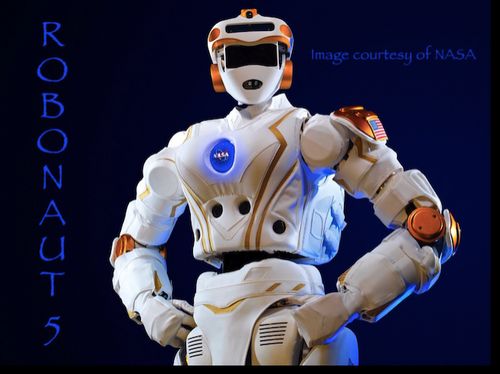NASA’s global competition for superhero robots coded to terraform Mars
Oct 28, 2021 · 2 mins read
0
Share

Desert storms encircling Mars ravage humanity’s first outpost. Its sole astronaut – an android named R5 - races to halt the base’s doomsday escape of oxygen before his compatriots’ imminent landing. NASA offers an astronomical prize to anyone who can avert the catastrophe.
Save
Share
This scenario – which reads like a sequel to “The Martian” – was born in the borderlands between cinema and real life. NASA, spinning off on the sci-fi film, has created a million-dollar purse for master plans to robotically protect the Mars habitats and explorers of the future.
Save
Share
The would-be savior in NASA’s Space Robotics Challenge is the parahuman Robonaut 5. Coders around the world were asked to guide the android through Herculean tasks aimed at rescuing the post-storm Mars sanctuary, says the contest’s creator, NASA scientist Monsi Roman.
Save
Share
To launch the prize, NASA created a virtual Mars, with a VR Robonaut, that competitors vied to program to resurrect the base. Roman says NASA plans to rocket real-world squads of Robonauts to assemble Martian havens and life-support systems before the first humans land.
Save
Share
Breakthrough enhancements developed by winning teams could power R5’s evolution as he trains for upcoming Mars missions. The Robonaut started life as an avatar, deployed to the International Space Station, that can be controlled by mission specialists based on Earth.
Save
Share
Wearing VR visors and cyber-gloves connected to R5, NASA “puppeteers” can see through his camera eyes and precisely pilot his spacewalks. But they say to build a Mars base, future generations of Robonauts have to become independent “thinking systems,” like Space Age Pinocchios.
Save
Share
Mars is up to 22 light-minutes distant from Earth, so teleoperation of R5 between the two planets isn’t possible. That’s why competitors had to transform R5 into an autonomous astronaut, says Victor Lopez, whose Barcelona team Olympus Mons was a top winner in NASA’s Challenge.
Save
Share
Creating robotic explorers for Mars will depend on remarkable advances in their cameras and lasers, computer vision, artificial intelligence and image recognition systems, plus training via deep learning and neural networks, says Lopez, who designs droids at Spain’s PAL Robotics.
Save
Share
Some coders and creators say the ultimate goal is to generate robotic Adams and Eves that evolve toward higher levels of intelligence across a Martian Eden. Cultivated oases peopled by androids and humans could expand beneath bot-built domes that terraform the now-frozen planet.
Save
Share
Select visionaries at NASA have even higher aims for R5. In a YouTube video produced for the robotics championship, a rocket-powered Robonaut - with a golden thunderbolt emblazoned across his spacesuit - soars above the planet, like a cyber-Superman patrolling the skies of Mars.
Save
Share
0